211 miles.
Yes, that is my next goal.
After Kilimanjaro I had a problem with setting my next major goal. While there were some mountains a little higher than Kilimanjaro that might be within my reach (for the record, Mt Everest is on my “I’ll only try to climb it if I get a deadly disease and only have 6 months to live” list), they weren’t likely to be next in my challenges to conquer.
So if I can’t go up, I decided I may try a ‘distance’ challenge instead. It wasn’t hard to come up with the target: I had hiked the beginning, end, and a tiny bit in the middle of the John Muir Trail (JMT) and had often thought about doing the entire thing. And it was penciled in last year as a possible hike this year. Time to change that to pen.
So with the goal established, I had to start planning. The longest backpacking treks I had done were only 8 days long (averaging about 50-60 miles of ground covered) and the most likely JMT itinerary for me to be able to do was 21 days long to cover the 211 miles. Three times longer.
There would be some chances for breaks, real beds, and showers in there, which would help. But it would be a challenge for my body to survive that, my feet and legs to not go on strike, and my willpower to keep me going and not to quit along the way. There were a few places you can abort, but fortunately not a lot and not very easy (to avoid temptation). 🙂
Permits for JMT hikes are a challenge to get, so I started early in the year trying to line up the permits I would need. You can either go southbound (SOBO) from Yosemite Valley to the top of Mt Whitney or northbound (NOBO) from Mt Whitney to Yosemite Valley.
While some people prefer the NOBO direction since you tackle the high point (Mt Whitney) at the start and then (on average) go downwards to Yosemite Valley at the end, the SOBO direction is the more traditional way to go. It’s also harder to get permits for.
One of the easier permits to get are from Cottonwood Pass. That allows you to go up the west side of Mt Whitney, come back down and then head north on the JMT. So I snagged a couple permits from there in July and August as backups.
Then Inyo National Forest changed the resupply rules.
You used to be able to leave the JMT for a day or so (the exact time was somewhat vague and a lot of people were abusing this to leave and reenter the wilderness repeatedly over the course of an entire summer) to resupply and then renter the wilderness without needing a new permit from the point where you reenter. Since long distance treks like the JMT and Pacific Crest Trail (PCT) are almost (if not) impossible to do with at least some stops to resupply and get a short break from the trail, this would throw a wrench into my plans.
To help cover my bases, I even grabbed a couple Kearsarge Pass permits about 7 days after my Cottonwood Lakes permits to allow me to resupply. Other resupply points like the Muir Trail Ranch and Reds Meadow were effectively on the JMT, so wouldn’t count as leaving the wilderness.
Fortunately, after some complaints from hikers and from businesses that rely on thru-hikers coming out of the wilderness to resupply, rest, and spend money, Inyo relented and allowed for long distance hikers to leave the wilderness for 24-hours. That would be fine for me and many other hikers to resupply and get a brief break from the wilderness.
For the SOBO permits, you need to get a prized ‘Donahue Pass’ permit that started in Yosemite Valley or Tuolumne Meadows. Of course, the Yosemite Valley trailheads being the most sought after since that is where the JMT starts.
So to get one of these permits, you start by entering a lottery about 170 days before your start date and then you wait for news if you got a permit or not. Since I felt June would be a little too early, I focused on trying for a July-September SOBO permit.
My first SOBO permit I got lucky enough to grab was a Glacier Point to Whitney Portal permit in mid-July. This would be little trickier to plan since I would have to arrange to get up to Glacier Point from the Valley, it was at least a good start to my search for permits. I’d also have to do a pre-hike to climb up from Happy Isles to the top of Nevada Falls the day before in order to fully cover the entire length of the JMT on the one trek.
Permits for a late August permit from Tuolumne Meadows and then a mid-September from Happy Isles also came to me. The later of which was a REAL long shot due to the weather deteriorating in the Sierra Nevadas as you go into October. But having options on such a long and difficult trek to organize was always good. For the Tuolumne Meadows permit, I also had to try for a Happy Isles permit 3-5 days before the Lyell Canyon Permit to allow you to cover the entire JMT and I was fortunate to find one of those as well. Being a solo hiker sometimes helps in obtaining permits.
Around this time, I also landed a Whitney Portal to Happy Isles permit in late July as a better NOBO backup option. With that being the best NOBO option, I started cancelling my Cottowood Lakes permits to allow other hikers the chance to grab them.
Then… the world changed completely…
COVID-19.
Have you heard of it?
While there was some news of this virus spreading during my early planning stages for the JMT, it wasn’t until March that it seemed like it may affect my plans.
Putting aside the impact to my daily life, my work life, my weekend hikes, and my short backpacking trips (reservations for Sunol and Point Reyes backpacking trips where the first casualties) when Yosemite closed down it could have ended all of my summer backpacking plans.
I was fortunate to still have a job, but had to adjust from working from home. I also had to adjust to not being able to go anywhere except the local parks for my day hikes. That did allow me to complete all the trails in Mt Diablo State Park (see https://wandering.earth/index.php/2020/06/21/mt-diablo-state-park-goal/), so there was some silver lining.
I pressed on with my planning in hopes that it would be possible to attempt hiking the entire JMT this year. Not only would Yosemite and Inyo have to be open and issuing wilderness permits, the resupply services would have to be open and operating. Not to mention various supporting business, transportation, and stay at home orders being lifted.
But it did change some of what I could do. For my Glacier Point permit, I would no longer be able to take the hiker’s bus from the Valley to Glacier Point to start my trek. While I could park up there, getting back to my Jeep at the end of my trip would be more complicated (but not impossible).
So after being able to talk to the Yosemite wilderness permit office in June, I landed an August 1st JMT permit from Happy Isles: The Holy Grail of JMT permits.
At that point, the later start seemed to be a safer option for the other things I needed to pull off this trek to be available and running. It would also give me a little more time to plan, prepare, and make sure I was physically ready for the trek.
Unfortunately, it could also give me more time to chicken out. 🙂
With the permits mostly settled and unlikely to need any changes, I had to start preparing my equipment and planning on my resupply points.
When doing a SOBO trek, a mini-resupply could be done in Tuolumne Meadows (TM). You could mail resupply packages to the store or buy needed food and supplies at the store. I could even get a real bed for the night and a real hot meal.
COVID-19 squashed all that. Since almost all the services in Tuolumne Meadows were closed due to the virus, only the backpackers camp in the TM campground would be available.
The options were to either start from Happy Isles with a full pack with enough food and gear to reach Reds Meadow or to prepare a mini-resupply package and leave it in the bear boxes in TM. At one point I even considered leaving my Jeep in TM and taking YARTS down to the Valley to start the trek, but that turned out to be a bit complicated to schedule with the COVID-19 changes.
So I settled on leaving a mini-resupply package in TM the day before my trek started.
That would keep my starting pack lighter and make my TM stop straightforward. I’ll still miss the chance to get a real hot meal on my way through TM, though. 🙂
The first full resupply was a easy choice: Reds Meadow in Mammoth Lakes. It’s basically right ON the JMT and offers the ability to pickup a mailed resupply bucket, has a store to buy additional items/food/gear, a shower, a laundry, a restaurant for a real hot meal, and even hikers cabins that would give me a much needed chance to rest my weary body. All the comforts of home. 🙂
But I think it’ll be an important break to keep me going southward.
Normally, you’d also have the option to take the shuttle bus into the city of Mammoth Lakes where there were many more options for lodging, gear, and food. But that wasn’t running this year due to the virus. It’s possible to hike up to the city, but it does add mileage to the trek that I’d rather avoid when possible. Reds Meadow should have everything I needed, so the shuttle bus not running should have no major impact to my plans.
After Reds Meadow, there are two possible resupply points: Vermillion Resort and Muir Trial Ranch
Vermillion was highly rated by the various JMT planning resources and a lot of people use it. Upon further research, it almost seems many people like it as a party destination and considered it a very social resort to enjoy a break from the trail at.
Even without the virus, I don’t really go for that type of atmosphere and when I’m trekking I like to get away from civilization and crowds. Plus, it was only 3 days from Reds Meadow and didn’t seem like it was really worth stopping there just for resupplying (at least for me).
So two days further down the trail, was Muir Trail Ranch. It’s basically the half way point of the JMT trail, so is a natural place to stop, resupply, rest, and take a break. They do have some lodging facilities, but not for short stays. But you can send them your resupply packages and they do have a small store, a place to do primitive laundry (a laundry roller press), and… hot springs.
While the hot springs at the ranch are only for people staying at the ranch, there is at least one primitive hot spring JMT hikers can use to rejuvenate their bodies. Here’s hoping it helps keep me heading southward.
The next resupply point is usually around Kearsarge Pass. It is also the longest stretch on the trail between resupply points (at least on the planned itinerary I am using). Six or seven days. Which would normally be doable by me on fresh legs, but after 110+ miles hiking the first half, this will be a challenge.
At Kearsarge Pass, you can hike out and down to Onion Valley and get a resupply package there or even get a shuttle ride into Independence or Lone Pine to resupply, get real hot food, and stay at a real hotel. The only problem with going to Onion Valley from the JMT is the mileage (almost 8 miles) and the elevation you have to descend (close to 2,000 feet) and then re-climb to get back to the JMT.
While that is tempting (especially if I go to Independence or Lone Pine for a real rest), the extra wear and tear on my body (that will probably be very tattered at that point) might not be worth it.
The alternative to going out to Onion Valley is to get a packer service to pack your resupply package out to you on the JMT itself. This isn’t cheap and can be tricky to coordinate (I have a vague idea how long it will take me to get to the Kearsarge area, but it’s a rough guess at best).
I have a few options for this service: Meet me at the JMT near Charlotte Lake, meet me closer to Kearsarge Pass (probably around Kearsarge Lakes), or if I feel the need to, change my plans and go out to Onion Valley for my resupply after all (and get some creature comforts down in the towns).
If I got lucky and the packers can find another group paying the service to bring their gear out to the JMT, it would be significantly cheaper for that option. But that could end up complicating the scheduling of the resupply.
So in mid-July, I sent my resupply packages to Reds Meadow and Muir Trail Ranch. The decision on the Kearsarge resupply would wait another week since I had more time for the package to be shipped over to Bishop.
As with any of my big treks, I was nervous and filled with apprehension as the start of the trek nears.
Of course, gear is an important part of making this trek successful. I had thought I had pretty much all the gear I needed already and would just have to get more food and a few small items.
How wrong I was.
Even my trusty tent failed me on my last Yosemite trip (although it was a minor problem with the zippers being balky). Fortunately, I had a spare and will use that for the JMT. I have decided to leave my footprint (it’s used to protect the bottom of the tent better) behind to save on their weight.
For electronics, I ended up buying a new 26800 mAh portable battery to help charge my electronic gear. Even with a solar charger to charge two smaller batteries (and my iPhone, camera, headlamp, and Inreach) I’ve found that I usually need a little extra to keep my gear going. Reds Meadow will be the only reliable place to recharge my gear, so having the big battery will be very useful.
My Sony HX99 camera is good to go (although I almost broke it in Yosemite).
I have an old Inreach satellite communicator for emergencies and some primitive communications, but this is the original version that was quite large and sucked AA batteries like a vampire. The weight of the old Inreach plus all the AA batteries I’d have to carry made me long for a smaller solution.
Enter the Inreach mini. It’s very small, has a basic LCD screen with some basic functions. Like the old Inreach, it connects to an app on my iPhone which allows me to send messages, track my progress to a website, and send SOS messages should the need arise. It’ll be useful for this long trek, so I added it to my equipment list.
For food, I have a collection of dehydrated food I have used and liked before. So I just had to buy some more. The COVID-19 situation led to some shortages, but I managed to get enough.
But then during my Yosemite trip, I found out that Mountain House changed their recipe for their Breakfast Skillet meal. I’m really not a fan of the new recipe. It’s edible, but doesn’t taste or feel the same. So I scrambled to find the old packages to give me enough for this trip.
After my Yosemite trip, I decided to switch to a lighter camp shoe to use after the day’s hiking was done. It’s nice to get out of your boots when around camp. But the ones I usually use are too heavy and also have openings that I found attracted a lot of dirt and pebbles. If the lighter shoes still seem too heavy, I can always discard them at one of my resupply points.
I also got more bug spray to make sure I had enough to cover the whole trip.
Normally, I use small disposable toothbrushes with toothpaste already in them. They don’t require you to rinse your mouth out with water and don’t weigh much for short trips. For 21 days (even with resupplies), I determined that it would be better to get some small toothpaste tubes and a small toothbrush.
I also made sure I got extra sports tape, duct tape, medicine, sleeping pills, ear plugs, and other misc sundries.
Clothing-wise, I was mostly all set. The only thing that concerned me was that I was getting rings of bruises around my ankles when I hiked. I thought it was my socks or liner socks being too tight so I tried a number of different sizes and brands before I figured out it was the shoes I use for day hikes. My heavy duty boots I would use for the JMT did not have the issues in Yosemite. So, while I have to find out what to do for my day hike boots, I should not have an issue on the JMT.
I also decided to invest in a couple knee braces to keep my knees moving. When I do long treks, I’ve had to use sports tape to wrap my knees to provide a little extra support. On a long trek like the JMT, that could eat up a lot of sports tape. So the solution is to use reusable knee braces. Tried several kinds and found some that seemed to work well in Yosemite.
One thing I didn’t usually bring on treks was hand sanitizer (except maybe some sanitizing wipes). But with the current COVID-19 situation, I made sure to pack some in my resupply packages and initial backpack inventory.
So with less than two weeks to go I’m trying to keep busy, keep up my preparation hikes/bike rides, finish my last resupply package, and make sure I have everything I need for the trek. And Make sure I don’t chicken out. 🙂
Wish me luck.
Less than a week to go…
All three resupply packages have been mailed out. The first two are confirmed to have arrived, the third is en-route.
Got all my food and equipment received and packed. But I did have a last minute thought to get some ultra-lightweight shoes better than the water shoes I was going to take instead of my open sided Croks that I decided were too open and too heavy. Ordered the new ones. If they make it in time before I leave, I’ll have to decide what to take. I may even end up taking my cheap flip flops since they are only 7oz compared to 12oz for the water shoes. They wont keep my feet clean or keep me from stubbing my toes, but they would allow me to walk around camp without having to slip on my boots every time I leave my tent.
I did what I call my “Final Pack”, which is putting everything in my pack and weighing it (with 1.5 liters of water). It came in at 43 pounds. Which is a little higher than I thought it would be (particularly since I only have 3 days of food to start from Happy Isles). Ran through the list of items, but couldn’t find anything I could do without. There will be some items I won’t use (there always is), but it’s impossible to know if I’ll need them until I finish my trek. Emergency items that hopefully won’t be needed, backup batteries that I may not need, food that I won’t eat, and maybe some of my clothing.
Fortunately, I’ll have chances at my resupply points to discard anything extra that I won’t need on the next leg. This will probably be excess food, but there’s also the chance to drop equipment that I don’t think I’ll use for the remaining legs.
The biggest problem now is the waiting. It seems every time when I’m nearing a big trek I start to get anxious, bored, or distracted. With all the planning and prep work mostly done, it’s hard not to want it to just start already.
So… I ended up deciding to take a 17 oz pair of slip on Vivobarefoot shoes. A little heavier than I hoped they would be, but they are my best choice for camp shoes of all my current shoe choices.
After adding 17 oz with the camp shoes, I took a final look at my pack and decided to drop a few things from it. Hopefully, it’s nothing I’ll need, but my starting pack is down to 42 pounds now. So basically, I removed 2 pounds, but added 1 with the shoes. 🙂


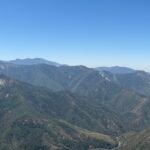
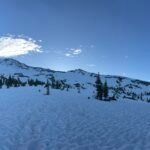
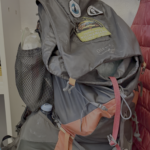
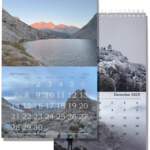
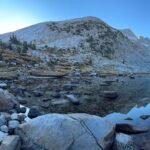
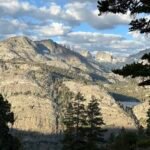
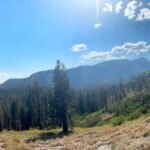
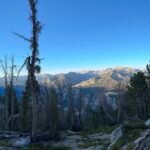
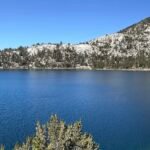
Comments by WanderingJim
JMT 2020 Day 3
"I'm afraid I have no idea. Not really a fisherman, so don't..."
JMT 2020 Trek Day by Day
"Yeah, but with 9,000 pictures, it's hard to label each one..."
Kilimanjaro – October 2019
"Everest Base camp is on my list too. Mostly since I know..."
Kilimanjaro
"You started hiking with Kilimanjaro first? Even I worked my..."